VIC-20 Screen Color by Jeffrey Daniels
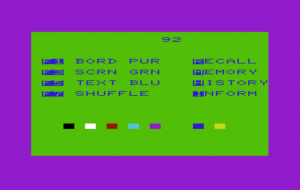 A super awesome Screen Color Scheme Editor for Unexpanded VIC 20 by Jeffrey Daniels.
A super awesome Screen Color Scheme Editor for Unexpanded VIC 20 by Jeffrey Daniels.
source: Denial (The Commodore VIC-20 forum)
 A super awesome Screen Color Scheme Editor for Unexpanded VIC 20 by Jeffrey Daniels.
A super awesome Screen Color Scheme Editor for Unexpanded VIC 20 by Jeffrey Daniels.
source: Denial (The Commodore VIC-20 forum)
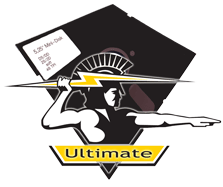 from 1541 Ultimate homepage:
from 1541 Ultimate homepage:
About 100 plastic cases have arrived, and they look really great! I am glad that black has become the color eventually, and that the material looks the way it does. And I am sure that everyone who is waiting for their unit will be satisfied with the case as well! The remaining cases of the batch that are ordered will arrive a bit later. I’ll update you as soon as I know more.
There is also a downside on the cases; due to the shrinkage of the material along the long side (not very visible, but when you measure you can see it), the board is a very tight fit inside the case. It is therefore very difficult to close it, and once it is closed, well… good luck with opening it! Unfortunately it will cost me a lot of time to build the units together. Hopefully I will get good at it after the first 10 or so.. ;)
Due to the demand, another 100 units (the hardware boards) have been ordered for production and will be ready in about a month, in the end-of-april time frame.
 Commodore Free Magazine Issue #38
Commodore Free Magazine Issue #38
Contents:
source: commodorefree.com
![]() Party is over.
Party is over.
This is the C64 Competition results:
C64 Demo:
C64 Music:
 The 10th X party will be held from October 1th until October 3rd 2010. The party will be at the new and improved location: De Hoof 18, Someren – the Netherlands. Competitions: C64 Demo, C64 Music and C64 Graphics. source: commodore-gg.hobby.nl x-2010 homepage
The 10th X party will be held from October 1th until October 3rd 2010. The party will be at the new and improved location: De Hoof 18, Someren – the Netherlands. Competitions: C64 Demo, C64 Music and C64 Graphics. source: commodore-gg.hobby.nl x-2010 homepage
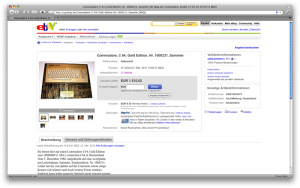 Commodore 64 Gold Edition on Ebay.
Commodore 64 Gold Edition on Ebay.
from Richard Lagendijk Homepage:
This a special edition of the Commodore C64, celebrating the 1.000.000th sale of the C64 in Germany. This is one of the most desirable Commodore items. There are about 300 golden Commodore C64 produced. The numbers from 1.000.000 until 1.000.100 were for the staff of the Commodore factory Braunschweig.
The rest was given to hard- en software companies, magazine-publishers and distributors. The C64 is a computer system with a keyboard, external power-supply and a motherboard. On the motherboard you will find a MOS 6510 processor, RAM / ROM memory, MOS 6569 VIC-II video chip, MOS 6581 SID sound chip and twice a MOS 6526 CIA. PAL version.
source: ebay auction richardlagendijk.nl
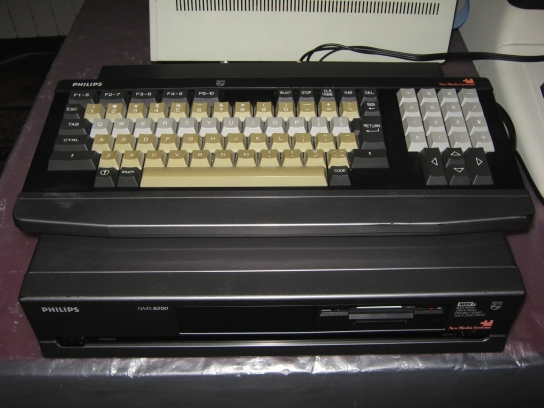
Autopsy:
The Philips NMS-8250, (NMS is short for “New Media Systems”) was a professional MSX 2 home computer for the high end market, with two built in floppy disk drives in a “pizza box” configuration. It featured professional video output possibilities, such as SCART for a better picture quality, and a detachable keyboard.
from Wikipedia:
MSX was the name of a standardized home computer architecture in the 1980s conceived by Kazuhiko Nishi, then Vice-president at Microsoft Japan and Director at ASCII Corporation. It is said that Microsoft led the project as an attempt to create unified standards among hardware makers. Despite Microsoft’s involvement, MSX-based machines were seldom seen in the United States and Britain, but they were popular in other markets.
Eventually 5 million MSX-based units were sold worldwide. It’s unclear why this attempt would be based in Japan rather than in the US or why Microsoft would not mention this involvement in its history while giving well known coverage to IBM-PC and Apple’s Macintosh, except for Nishi being the true sponsor and not Microsoft.
Nishi proposed MSX as an attempt to create a single industry standard for home computers. Inspired by the success of VHS as a standard for video cassette recorders, many Japanese electronic manufacturers along with GoldStar, Philips and Spectravideo built and promoted MSX computers. Any piece of hardware or software with the MSX logo on it was compatible with MSX products of other manufacturers. In particular, the expansion cartridge form and function were part of the standard; any MSX expansion or game cartridge would work in any MSX computer.
source: wikipedia msx.org msx.retro8bits.com sharksym.egloos.com
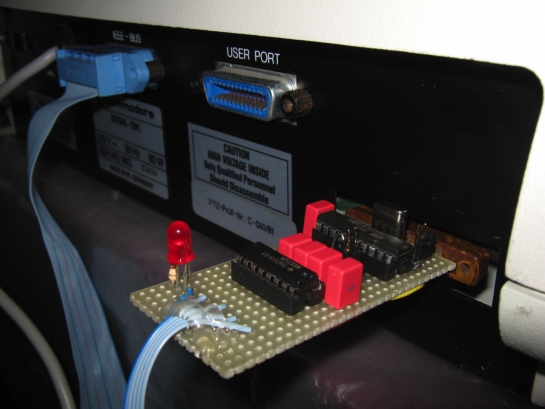
Autopsy:
This is my homebrew C2N232 Interface.
from Marko Mäkelä’s homepage:
The C2N232 is a small RS-232 interface that can be plugged to the cassette port of an 8-bit Commodore computer:
source: Marko Mäkelä’s Homepage
iAN CooG Site has been update with some nice stuff.
source: iancoog.altervista.org
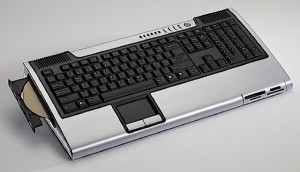 from Playfaster:
from Playfaster:
Like it’s ancestor, it is a “computer in a keyboard” all-in-one. Of course, all materials and hardware have been updated.
Entry level is based on the Intel Core 2 Duo E7500 with Intel G31 Express chipset. You can, of course, upgrade it with a Quad core (Q8200, Q9400, Q9550 or Q9650). The amount of memory is 2 GB SDRAM-DDR2, upgradable up to 4 GB. Hard drive choices are many from a standard 160 GB SATA, up to 2 TB; not forgetting a removable 80 GB.
Graphic card is an Intel Graphics Media Accelerator 3100, supporting Microsoft DirectX 9.0c. Not to mention all the connectors like Ethernet, Audio in/out, microphone, 4 USB 2.0, 2 serials, 1 Parallel, PS/2, DVI, VGA or the build-in touch-pad and speakers. It is equipped with a slim optical drive (upgradable with a DVD recorder) and a PCI slot. Read more…
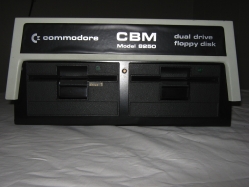
Autopsy:
from Wikipedia:
The Commodore 8050 and Commodore 8250 were dual unit 5¼” floppy disk drives for Commodore International computers. They used a wide rectangular steel case form similar to that of the Commodore 4040, and used the IEEE-488 interface common to Commodore PET/CBM computers.
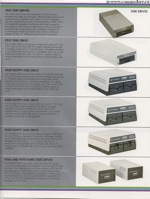 The 8050 was a single sided drive, whereas the 8250 could use both sides of a disk simultaneously. Both used a “quad” density format storing approximately 0.5 megabyte per side. The density of media was similar to later PC high density floppy disks, but the 8050 and 8250 could not use PC high density disks reliably. Since “quad” density disks were rare even at the time, users quickly found that typical double density floppy disks had enough magnetic media density to work in these drives.
The 8050 was a single sided drive, whereas the 8250 could use both sides of a disk simultaneously. Both used a “quad” density format storing approximately 0.5 megabyte per side. The density of media was similar to later PC high density floppy disks, but the 8050 and 8250 could not use PC high density disks reliably. Since “quad” density disks were rare even at the time, users quickly found that typical double density floppy disks had enough magnetic media density to work in these drives.
These drives were not dual mode, so they could not read or write disks formatted by the more common lower capacity Commodore 1541 or Commodore 4040 models. Some variants of these drives existed. The Commodore 8250LP was the 8250 in a lower profile, tan-colored case. The Commodore SFD-1001 was a single drive version of the 8250 in a Commodore 1541 style case (similarly to the Commodore 2031LP), often used by bulletin board systems for their physical similarity to 1541s and high capacity and speed.
source: wikipedia
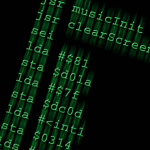 Kick Assembler is the combination of an assembler for doing 6510 machine code and a high level script language.
Kick Assembler is the combination of an assembler for doing 6510 machine code and a high level script language.
Kick Assembler comes with an exe file so you don’t need to install java. The jar file is still distributed – we will keep supporting all java compatible platforms (Linux/Osx).
source: theweb.dk
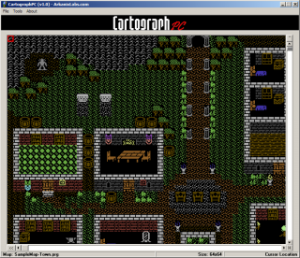 CartographPC is a Windows application created to assist in designing tile-based datamaps. This devtool serves as a companion piece to our C64 native Cartograph devtool.
CartographPC is a Windows application created to assist in designing tile-based datamaps. This devtool serves as a companion piece to our C64 native Cartograph devtool.
The original purpose of CartographPC was to enable us to take nice screenshots of our datamaps without having to take four or six screenshots of smaller windows and piece them together. CartographPC has since grown into a full editor with the benefit of being able to load datamaps created on the C64 directly into memory and edit, save, and move them back to C64 without much hassle.
It works by creating datamaps using tilesets created on C64 with the old, but popular, ultrafont editor. Datamaps can have dimensions of 1 to 255 tiles horizontally and 1 to 127 tiles vertically. CartographPC allows the user to create a datamap as small as 40×25 tiles (one screen) and up to 255×127 tiles.
Currently CartographPC doesn’t support exported datamaps (RLE compressed or converted) from Cartograph but as noted above, standard datamaps are 100% supported.
This application was created as an internal devtool for Arkanix Labs. We’re using Cartograph and CartographPC extensively with our Crimson Twilight Trilogy (tile-based CRPG) and Damned: Out Of Hell (push scroller shooter/jump and run).
source: arkanixlabs.com c64dev.com
Recent Comments